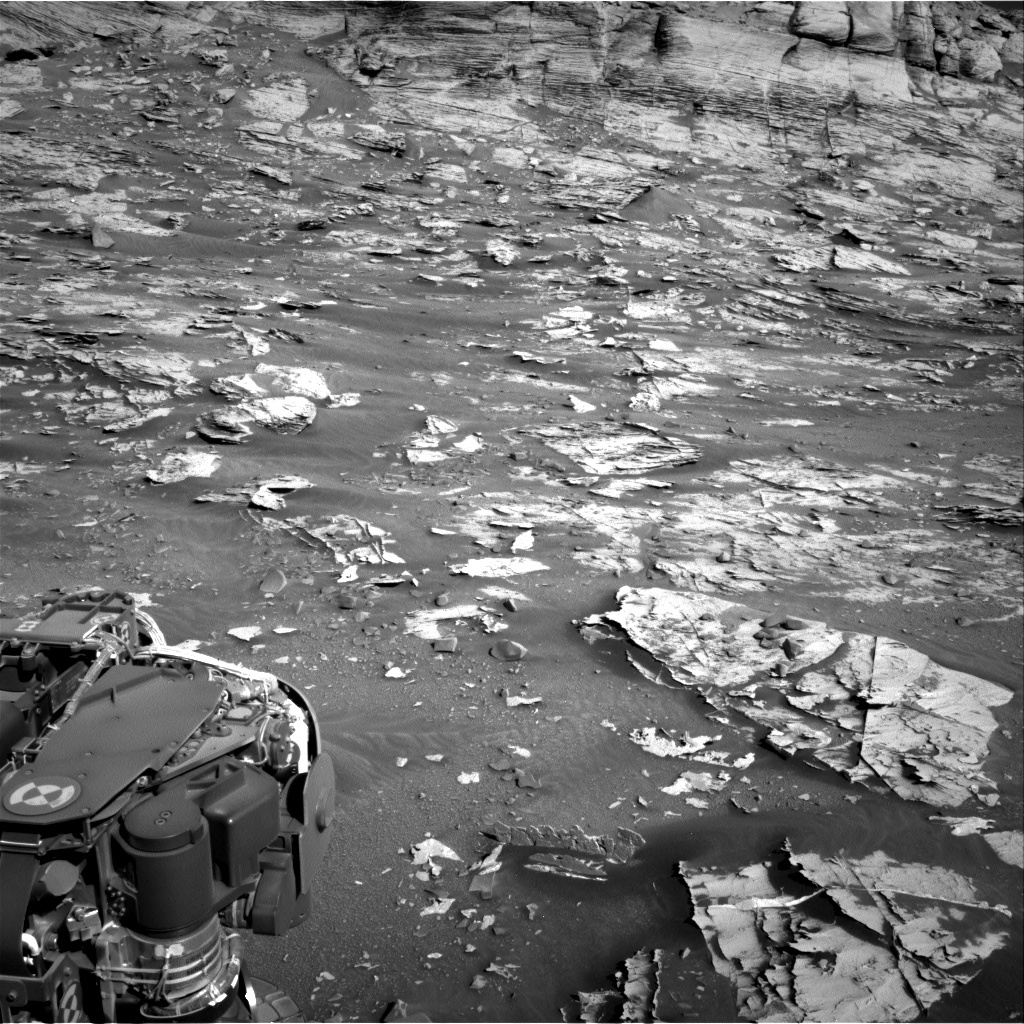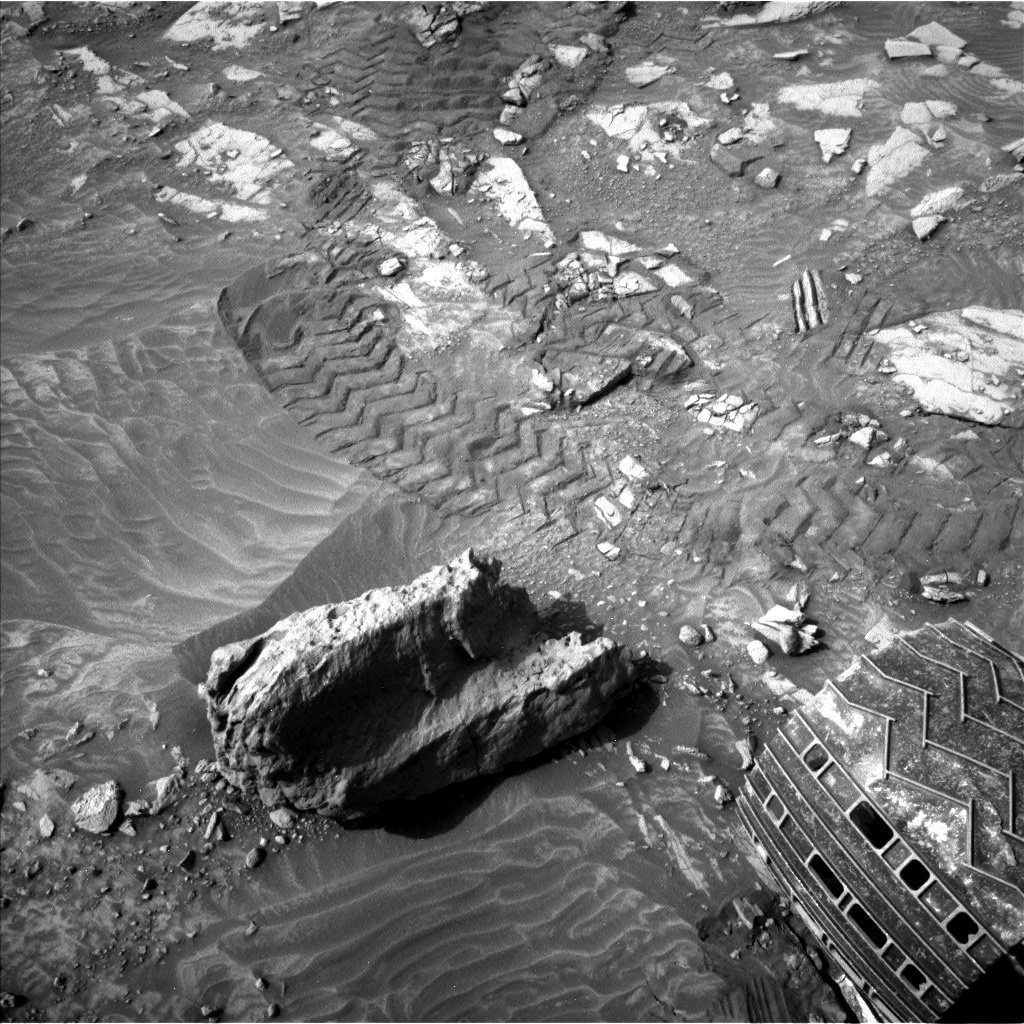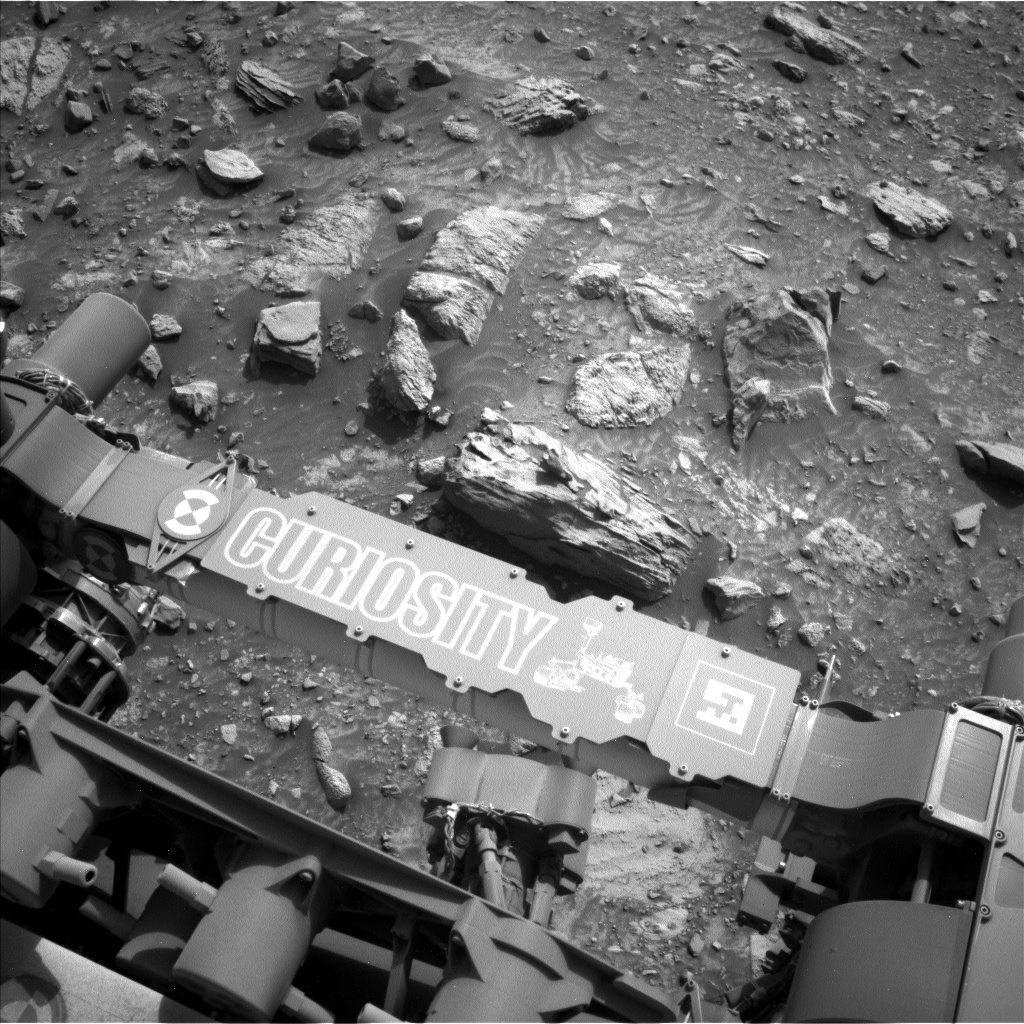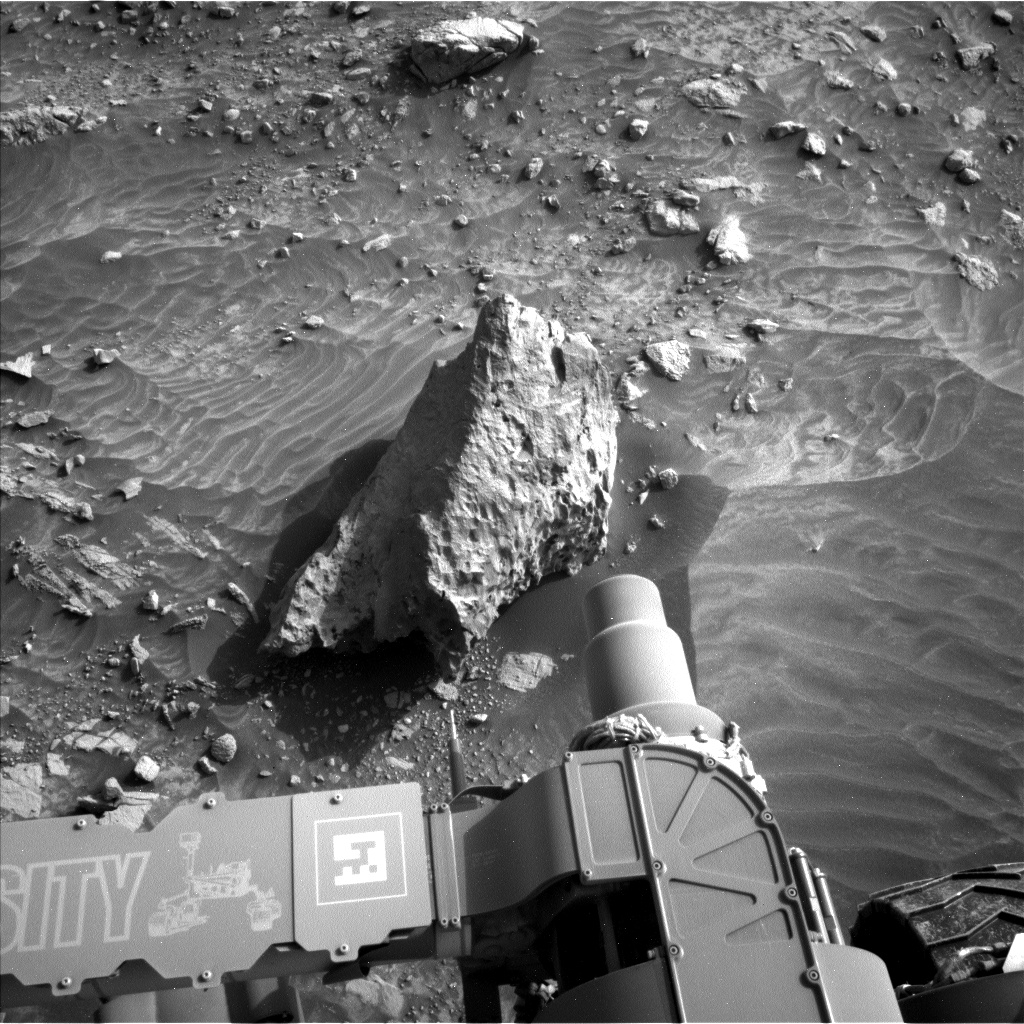2 min read

The Sol 3285 drive went well and MSL has a good view of nearby outcrops, so the science team had a lot of potential drill and contact science targets to discuss. We sent a prioritized list of drive targets to the Rover Planners, and ultimately selected a low-lying outcrop seen right of center in this image. This target appears to be easily accessible, so today's plan represents the first sol of a new drill campaign! Although the time available before new data must be relayed to Earth was limited today, we were able to plan contact science on a nearby rock target called "Dumbuck" and some remote sensing observations as well. It was a busy and sometime hectic planning day for the team (including me as SOWG Chair), but the effort was worth it because the final plan is excellent.
After APXS and MAHLI examine Dumbuck, ChemCam will shoot its laser at a nearby nodule-rich bedrock target named "Fallen Stack" to look for compositional variations among the nodules and surrounding bedrock. After the Right Mastcam documents the laser spots, several Mastcam stereo mosaics are planned, of the drill site for context, of an outcrop to the west dubbed "Bellevue," and an outcrop uphill named "Cliffs of Hallaig." Mastcam stereo mosaics will also be acquired on a couple targets that had been imaged before, "Coylton Rocking Stone" and "Ciuff Hill," from our new viewpoint. After the drive to the new drill site, in addition to the standard post-drive imaging, Navcam and Mastcam will take mosaics of much of the terrain around us to enable detailed target selection tomorrow. Navcam will also search for clouds and MARDI will image the surface behind the left front wheel during twilight.
Written by Ken Herkenhoff, Planetary Geologist at USGS Astrogeology Science Center







